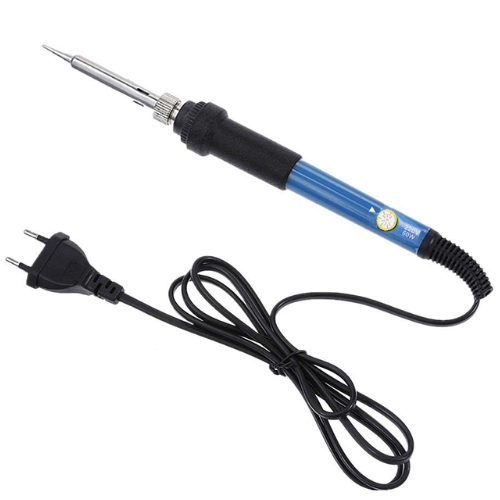Solder
A soldering iron is an essential tool for electronic assembly and repair, used to melt solder and join electronic components to printed circuit boards (PCBs). It is a hand tool that heats up to melt the solder, allowing it to flow into the joint between two workpieces, creating a secure electrical connection. Key Features: ⚫ Heating Element: Typically electric, heats the tip of the soldering iron to a temperature suitable for melting solder (generally between 250°C and 450°C). ⚫ Temperature Control: Some models offer adjustable temperature settings, allowing for precise control depending on the task and type of solder. ⚫ Interchangeable Tips: Available in various shapes and sizes (conical, chisel, etc.) to accommodate different types of soldering tasks. ⚫ Power Rating: Usually measured in watts (15W to 60W for most electronic work). Higher wattage means faster heating. Applications: ⚫ Electronic Assembly: Soldering components onto PCBs for hobby projects, repairs, or manufacturing. ⚫ Repairs: Fixing broken electronic devices by reattaching loose components or wires. ⚫ Prototyping: Building and testing new electronic circuits. ⚫ Jewelry Making: Some soldering irons are used in metalwork and jewelry making, though specialized tools are often preferred. Advantages: ⚫ Precision: Allows for accurate and precise soldering of small electronic components. ⚫ Versatility: Suitable for a wide range of tasks, from simple repairs to complex assemblies. ⚫ Portability: Generally lightweight and portable, easy to transport for fieldwork or between workstations. ⚫ Cost-Effective: Affordable options are available for hobbyists, while more advanced models cater to professional needs.
